How to Cite Blogs
Whether writing a research paper or report, especially dealing with a societal or cultural issue, you may want to use blog posts as references. Blogs are cited similarly to other electronic sources, except that you typically identify it as...
Sample Citations
 How to Cite Blogs Picture 1 MLA Blog Citation
How to Cite Blogs Picture 1 MLA Blog Citation How to Cite Blogs Picture 2 APA Blog Citation
How to Cite Blogs Picture 2 APA Blog Citation How to Cite Blogs Picture 3 Chicago Blog Citation
How to Cite Blogs Picture 3 Chicago Blog CitationMethod 1 of 3:
MLA
-
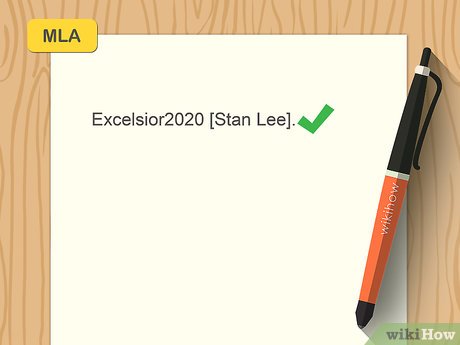 How to Cite Blogs Picture 4 Identify the author of the blog, if possible. Some blogs are written anonymously, but for most you will at least have a screen name or user name, even if you don't have a real name. If you have both, include the name the person posts under first, with their real name in brackets afterwards. Place a period at the end of the blogger's name.[1]
How to Cite Blogs Picture 4 Identify the author of the blog, if possible. Some blogs are written anonymously, but for most you will at least have a screen name or user name, even if you don't have a real name. If you have both, include the name the person posts under first, with their real name in brackets afterwards. Place a period at the end of the blogger's name.[1]- Example: Excelsior2020 [Stan Lee].
-
 How to Cite Blogs Picture 5 Provide the title of the post in quotation marks. The title of the specific post follows the name of the blogger. If you're not citing a specific post, but rather the blog as a whole, skip this step. Use title-case, capitalizing nouns, pronouns, adjectives, verbs, and adverbs in the post title. Place a period at the end of the post title, inside the closing quotation marks.[2]
How to Cite Blogs Picture 5 Provide the title of the post in quotation marks. The title of the specific post follows the name of the blogger. If you're not citing a specific post, but rather the blog as a whole, skip this step. Use title-case, capitalizing nouns, pronouns, adjectives, verbs, and adverbs in the post title. Place a period at the end of the post title, inside the closing quotation marks.[2]- Example: Excelsior2020 [Stan Lee]. "The Return of Captain America."
-
 How to Cite Blogs Picture 6 Include the name of the website and the sponsor or publisher. Put the name of the website or blog in italics immediately after the title of the post. If the blog has a sponsor, such as an affiliated corporation or organization, provide that after the title of the blog. Close this portion of your citation with the permalink to the post. Separate these pieces with commas, then place a period at the end of the URL.[3]
How to Cite Blogs Picture 6 Include the name of the website and the sponsor or publisher. Put the name of the website or blog in italics immediately after the title of the post. If the blog has a sponsor, such as an affiliated corporation or organization, provide that after the title of the blog. Close this portion of your citation with the permalink to the post. Separate these pieces with commas, then place a period at the end of the URL.[3]- Example: Excelsior2020 [Stan Lee]. "The Return of Captain America." Stan's Thoughts, Marvel Comics, stansthoughts.marvelcomics.com/post/999/cap_america_return.
-
 How to Cite Blogs Picture 7 List the date you accessed the post. Type the word "Accessed," then type the latest date you looked at the post using day-month-year format. You can abbreviate the name of the month, or spell it out. Place a period after the year to close out your citation.[4]
How to Cite Blogs Picture 7 List the date you accessed the post. Type the word "Accessed," then type the latest date you looked at the post using day-month-year format. You can abbreviate the name of the month, or spell it out. Place a period after the year to close out your citation.[4]- Example: Excelsior2020 [Stan Lee]. "The Return of Captain America." Stan's Thoughts, Marvel Comics, stansthoughts.marvelcomics.com/post/999/cap_america_return. Accessed 17 Apr. 2017.
- Blogs can be changed and posts edited or deleted at any time. If your readers go back and look at it later, they'll know if it has been changed or updated since you used it as a source.
-
 How to Cite Blogs Picture 8 Include the first item in the full citation in your parenthetical citations. Parenthetical citations in the body of your paper are meant to point your reader to the correct full citation in your "Works Cited." Normally, the author's last name and page number is used. For blogs, simply use whatever comes first in your full citation. Omit the page number, or any indication that there are no page numbers.[5]
How to Cite Blogs Picture 8 Include the first item in the full citation in your parenthetical citations. Parenthetical citations in the body of your paper are meant to point your reader to the correct full citation in your "Works Cited." Normally, the author's last name and page number is used. For blogs, simply use whatever comes first in your full citation. Omit the page number, or any indication that there are no page numbers.[5]- Example: (Excelsior2020).
Method 2 of 3:
APA
-
 How to Cite Blogs Picture 9 Start with the name the post is credited to. For a blog post, you may find a real name, or simply a screen name or user name. Posts also might be credited to an organization or corporation. Whatever name you have, it forms the first part of your bibliographic citation. Place a period at the end of the name.[6]
How to Cite Blogs Picture 9 Start with the name the post is credited to. For a blog post, you may find a real name, or simply a screen name or user name. Posts also might be credited to an organization or corporation. Whatever name you have, it forms the first part of your bibliographic citation. Place a period at the end of the name.[6]- Example: Excelsior2020.
-
 How to Cite Blogs Picture 10 Provide the date of publication in parentheses. A blog post typically gives the month, day, and year it was posted. If it doesn't go into that much detail, just use the information you have. Start with the year, then type a comma, then the month and the day. If the blog post has a time stamp, it isn't necessary to provide that with the date, even if there are multiple posts for one day. Place a period just after the closing parentheses.[7]
How to Cite Blogs Picture 10 Provide the date of publication in parentheses. A blog post typically gives the month, day, and year it was posted. If it doesn't go into that much detail, just use the information you have. Start with the year, then type a comma, then the month and the day. If the blog post has a time stamp, it isn't necessary to provide that with the date, even if there are multiple posts for one day. Place a period just after the closing parentheses.[7]- Example: Excelsior2020. (2017, April 15).
-
 How to Cite Blogs Picture 11 Type the title of the post and identify it as a blog post. Type a space after the period following the publication date, then type the full title of the post. Use sentence-case, capitalizing only the initial word and any proper nouns. Type a space after the title and type the phrase "Blog post" in square brackets. Place a period after the closing bracket.[8]
How to Cite Blogs Picture 11 Type the title of the post and identify it as a blog post. Type a space after the period following the publication date, then type the full title of the post. Use sentence-case, capitalizing only the initial word and any proper nouns. Type a space after the title and type the phrase "Blog post" in square brackets. Place a period after the closing bracket.[8]- Example: Excelsior2020. (2017, April 15). The return of Captain America [Blog post].
-
 How to Cite Blogs Picture 12 End with a permalink to the post. The permalink is the URL that leads directly to the post. You can usually get to this URL by clicking on the post or its title. Type "Retrieved from" and then copy the URL. Do not place a period at the end of the URL.[9]
How to Cite Blogs Picture 12 End with a permalink to the post. The permalink is the URL that leads directly to the post. You can usually get to this URL by clicking on the post or its title. Type "Retrieved from" and then copy the URL. Do not place a period at the end of the URL.[9]- Example: Excelsior2020. (2017, April 15). The return of Captain America [Blog post]. Retrieved from http://www.stansthoughts.marvelcomics.com/post/999/cap_america_return
- Note that there is no need to include the title of the blog in your citation. Typically the title of the blog will be evident from the URL, but even if it isn't, this information isn't required for an APA citation.
-
 How to Cite Blogs Picture 13 Use the author name and year for in-text citations. Any time you paraphrase or quote the blog in the body of your paper, APA style requires a parenthetical citation with the last name of the author and the year of publication. For blogs, use whatever name you used in your full citation.[10]
How to Cite Blogs Picture 13 Use the author name and year for in-text citations. Any time you paraphrase or quote the blog in the body of your paper, APA style requires a parenthetical citation with the last name of the author and the year of publication. For blogs, use whatever name you used in your full citation.[10]- Example: (Excelsior2020, 2017).
Method 3 of 3:
Chicago
-
 How to Cite Blogs Picture 14 Cite the blog solely within the body of your paper. Unlike other citation styles, Chicago doesn't require you to provide a bibliographic citation or a footnote if you want to reference a blog post. Rather, you can provide the name of the blog and the date of publication in the text of your paper itself.[11]
How to Cite Blogs Picture 14 Cite the blog solely within the body of your paper. Unlike other citation styles, Chicago doesn't require you to provide a bibliographic citation or a footnote if you want to reference a blog post. Rather, you can provide the name of the blog and the date of publication in the text of your paper itself.[11]- Example: "In a blog post dated April 15, 2017, Stan Lee revealed a new comic book series starring Captain America."
- Some instructors or supervisors may prefer you to include a bibliographic entry and footnote for the blog post, even if it isn't mandated by Chicago style. Ask beforehand to make sure.
-
 How to Cite Blogs Picture 15 Start bibliography entries with the title of the blog. When creating a bibliographic entry for a blog in Chicago style, cite to the entire blog – not just a single post. The title of the blog should be in italics. Place the word "blog" in parentheses, unitalicized, after the title. Type a period after the closing parentheses.[12]
How to Cite Blogs Picture 15 Start bibliography entries with the title of the blog. When creating a bibliographic entry for a blog in Chicago style, cite to the entire blog – not just a single post. The title of the blog should be in italics. Place the word "blog" in parentheses, unitalicized, after the title. Type a period after the closing parentheses.[12]- Example: Stan's Thoughts (blog).
-
 How to Cite Blogs Picture 16 Provide a URL to the front page or main page of the blog. The only other part of your bibliographic citation in Chicago style is the main URL for the blog itself. Include the entire URL, along with "http://," and place a period at the end.[13]
How to Cite Blogs Picture 16 Provide a URL to the front page or main page of the blog. The only other part of your bibliographic citation in Chicago style is the main URL for the blog itself. Include the entire URL, along with "http://," and place a period at the end.[13]- Example: Stan's Thoughts (blog). http://www.stansthoughts.marvelcomics.com.
-
 How to Cite Blogs Picture 17 Start with the name of the author for footnotes. While detailed information about the post you're citing isn't necessary in your bibliography, it is required if you're doing footnotes. List the name of the author of the post, as it is listed on the blog. It may be a screen name, or the name of a corporation or organization. Place a comma after the author's name.[14]
How to Cite Blogs Picture 17 Start with the name of the author for footnotes. While detailed information about the post you're citing isn't necessary in your bibliography, it is required if you're doing footnotes. List the name of the author of the post, as it is listed on the blog. It may be a screen name, or the name of a corporation or organization. Place a comma after the author's name.[14]- Example: Excelsior2020,
-
 How to Cite Blogs Picture 18 Provide the title of the post and the blog. Using title-case, type the full title of the blog post you referenced in your paper in quotation marks. Place a comma inside the closing quotation marks, then type the name of the blog in italics. Place a comma after the name of the blog.[15]
How to Cite Blogs Picture 18 Provide the title of the post and the blog. Using title-case, type the full title of the blog post you referenced in your paper in quotation marks. Place a comma inside the closing quotation marks, then type the name of the blog in italics. Place a comma after the name of the blog.[15]- Example: Excelsior2020, "The Return of Captain America," Stan's Thoughts,
-
 How to Cite Blogs Picture 19 List the date of publication and your date of access. Type the dates in month-day-year format using commas after the day and the year. Type the word "accessed" before your date of access to distinguish it from the date the post was published. Place a comma after your access date.[16]
How to Cite Blogs Picture 19 List the date of publication and your date of access. Type the dates in month-day-year format using commas after the day and the year. Type the word "accessed" before your date of access to distinguish it from the date the post was published. Place a comma after your access date.[16]- Example: Excelsior2020, "The Return of Captain America," Stan's Thoughts, April 15, 2017, accessed April 17, 2017,
-
 How to Cite Blogs Picture 20 Close your footnote with a permalink to the post. The URL in your footnote should be a direct URL to the post you're referencing – not a URL to the front or main page of the blog. Place a period at the end of the URL to complete your footnote.[17]
How to Cite Blogs Picture 20 Close your footnote with a permalink to the post. The URL in your footnote should be a direct URL to the post you're referencing – not a URL to the front or main page of the blog. Place a period at the end of the URL to complete your footnote.[17]- Example: Excelsior2020, "The Return of Captain America," Stan's Thoughts, April 15, 2017, accessed April 17, 2017, http://www.stansthoughts.marvelcomics.com/post/999/cap_america_return.
4 ★ | 2 Vote
You should read it
- How to Cite a Blog in APA
- How to Choose Your Blog Name
- Write Blog with Microsoft Word 2013
- How to Create a Bilingual Blog
- How to Be a Good Blogger
- How to turn Twitter topics into blog posts
- How to Write a Sewing Blog
- What Makes a Successful and Popular Blog, post regular updates
- How to Start a Blog For Free
- How to Start a Blog
- How to Create a Personal Blog
- WordPress.com blog service collapsed because of a DoS attack
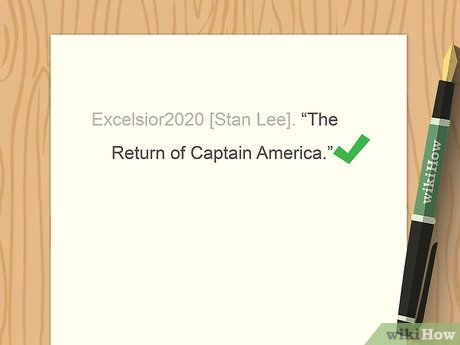


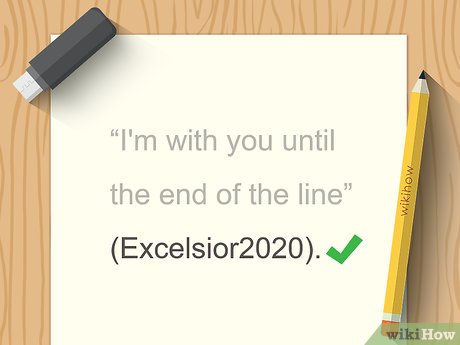
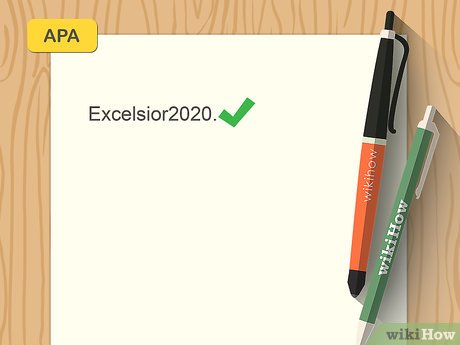
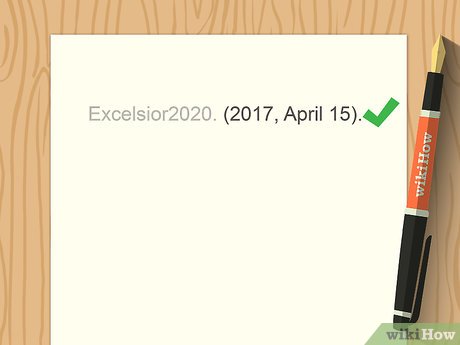
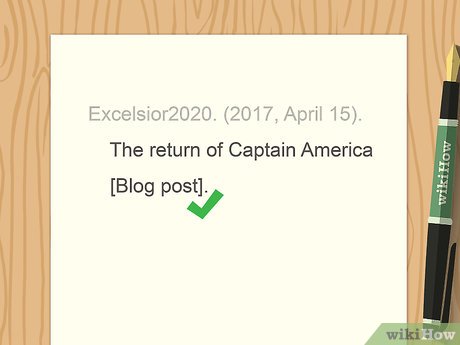
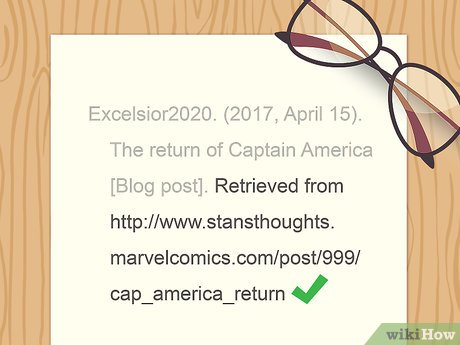


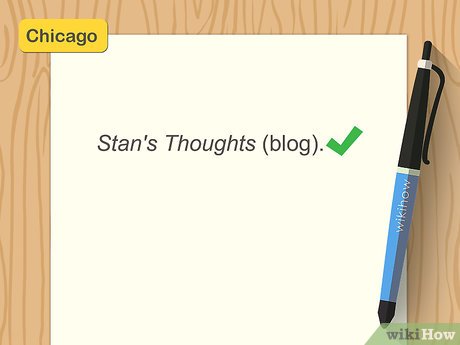

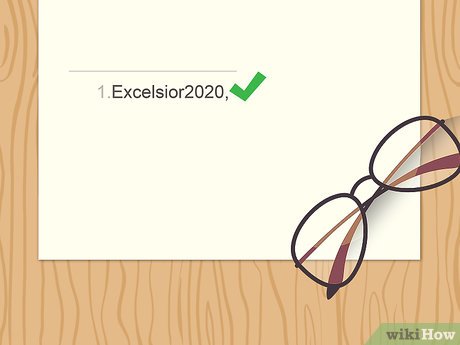

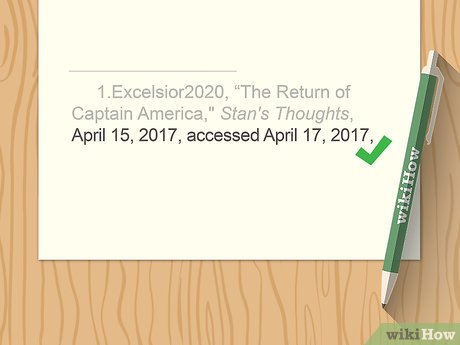
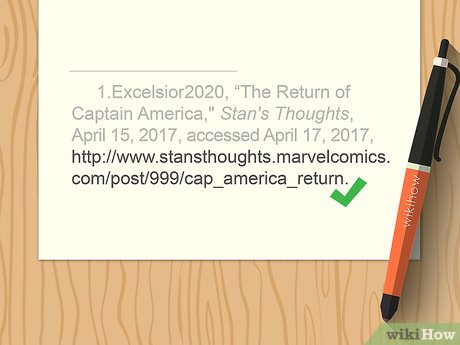






 3 types of blogs to help you make money
3 types of blogs to help you make money How to Cite a Blog in APA
How to Cite a Blog in APA How to Find Blogs
How to Find Blogs Blogs are not simply diary pages
Blogs are not simply diary pages More than 10 million blogs stopped working because of a problem
More than 10 million blogs stopped working because of a problem How to Cite Images in PowerPoint
How to Cite Images in PowerPoint